Explore the Planetarium
A landmark of the pink city
The unflinching desire to fly unbridled in the sky is as old as the civilization itself. However, the yearning to break away from the shackles of earth's gravity to explore the unfathomable universe is as recent as a couple of centuries old. The dream became reality a little more than half a century ago, bringing in an unprecedented growth of scientific imagination and innovation. The space-age of the sixties and seventies saw tremendous achievements in space exploration starting from embedding human footprints on the Moon to flying past the distant worlds in the solar system.
Since then, an entire generation of people has grown old only dreaming about pushing the final frontiers of human limits and by contributing to the robotic sojourn of those distant worlds. These endeavours have enriched our experience and supplemented our knowledge about our home planet and have made our lives smoother by producing innumerable technology spin-offs in the process.
The planetariums worldwide over these decades have played a pivotal role by disseminating the excitement of space exploration to the masses and inspiring generations of young minds to dedicate themselves for the progress of astronomy & space science. The excitement of the space age also touched the hearts of the corporate Birlas very early. A few planetariums dedicated for the public by the C.K.Birla group came up at different parts of the country in the eighties, These are B.M.Birla Planetariums at Jaipur, Hyderabad and Chennai highlighting the earliest examples of first corporate initiatives in the country to popularise science and especially astronomy & space science.
The B.M.Birla Planetarium, Jaipur has a long legacy in the field of popularisation of science and spreading awareness among the masses, especially among the school children. The efficient and uninterrupted operation of this planetarium since 1989 along with its various popularisation programmes and its widely appreciated shows are the hallmarks on the pink city landscape. Various nobel laureates and other luminaries from almost all parts of the world have graced this planetarium over the years with their talks and deliberations during various workshops and seminars conducted under its dome.
B.M. Birla Planetarium, Jaipur, is now an integral part in the intellectual landscape of the city and a valuable asset for its students and intellegentia. The planetarium is dedicated to serve the city and its populace for many more years, keeping alive the wonderful three centuries old legacy of its founder astronomer king - Raja Sawai Jai Singh.
A journey down the memory lane
The B.M.Birla Planetarium was inaugurated on March 17, 1987, by Sh. G.P.Birla and Smt. Nirmala Birla. Over more than a quarter century of its operation, the planetarium has produced and screened 25 shows, organised seminars on various topics related to astronomy & space science, conducted workshops to enthuse and educate an umpteen number of teachers and students and has held open sky observation sessions using binoculars and telescopes to mesmerise thousands of curious onlookers.
Ranging over as varied a topic as a simulated imaginary journey across the various latitudes of the earth to its frigid poles, to the most distant and exotic objects of the universe, the shows have been widely appreciated by people visiting from almost all parts of the country. The colourful visuals projected by tens of projectors on the 12 meter wide dome along with the crystal clear, pin pointed stars by the central GOTO projector and impressive story lines presented using post production techniques with ultimate care, have held its visitors spell-bound over the years.
How big and varied is this universe, how far are the stars which glitter in the sky, what exotic objects are abound in the depths of space, what are those other worlds revolving around the sun and other stars, are they inhabited, are we alone, are there others like us, these and many other questions agitate the thinking mind; and the planetarium tries to satiate them with its shows, seminars, live presentations, workshops, sky viewing sessions and occasional eclipse expeditions.
The planetarium prides itself with its widely researched scripts collated from the authentic sources, a library of latest books, subscribed periodicals, the internet and institutional original research. Here is a comprehensive list of planetarium shows with their inaugural dates.
|
|
Show Title |
Date of Inauguration |
|
1. |
The Astounding Universe |
December, 1989 |
|
2. |
The Land of the Midnight Sun |
June, 1990 |
|
3. |
Wonders of the Night Sky & World's Greatest Mystery |
February, 1991 |
|
4. |
Visitors From Outer Space |
June, 1993 |
|
5. |
Secrets of the Universe |
June, 1994 |
|
6. |
Celebrating the 25th anniversary of Moon Landing |
December, 1994 |
|
7. |
The Blood Stained Jupiter |
December, 1994 |
|
8. |
Eclipses |
September, 1995 |
|
9. |
A Fantastic Voyage Through the Solar System |
August, 1996 |
|
10. |
A Messenger From Mars |
June, 1997 |
|
11. |
Echoes From the Ancient Skies – Kumbh Mela |
June, 1998 |
|
12. |
The Hubble Universe |
May, 1999 |
|
13. |
Space in New Millennium |
May, 2000 |
|
14. |
The Violent Universe |
June, 2001 |
|
15. |
Planets Beyond |
May 2002 |
|
16. |
Reach for the Stars |
June, 2003 |
|
17. |
Mars Beckons |
July, 2004 |
|
18. |
The New Cosmos |
July, 2005 |
|
19. |
Worlds in Collision |
July, 2006 |
|
20. |
To the Land of the Midnight Sun (Remake) |
June, 2007 |
|
21. |
Through the Eyes of Hubble (Remake) |
July 2008 |
|
22. |
The Moon – Our Neighbour |
October, 2009 |
|
23. |
Our Solar System |
March, 2011 |
|
24. |
The Ancients & Their Stellar Connections |
November, 2013 |
| 25. | India's Pride - Mangalyaan |
September, 2016 |
| 26. |
The Incredible Voyage of Cassini |
February, 2021 |
A galaxy of national and international luminaries have visited the planetarium to deliberate upon and participate in various seminars and symposia held over the years.
During a symposium on Science & Technology for Peace & Progress, March 21, 1990, it was an honour to host and listen to a renowned astrophysicist and noble laureate Prof. William A. Fowler, California Institute of Technology, along with various other national and international scholars, such as, Dr. Roser Lesgard, President of City of Science, Paris, Dr. James Sharp, Florida, USA, Veronika Hodkova, Checkoslowakia, Dr. Jairam Reddy, Tirupati, Prof. Leonel Takgar, USA, Prof. Bashir, Dr. S.S. Chhabonia, Dr. R.S. Shresth, National History Museum, Kathmandu, Nepal, Prof. H.B. Lilly White, Rootgars, USA, Prof. Winde, Beljium, Prof. Ashish Mishra.
Jaipur had the opportunity of listening to Prof. S.M.R. Ansari and Dr. S.D.Sharma, Aligarh Muslim University, Prof. S.D. Sharma, Punjabi University, Patiala, Dr. G.S.D.Babu, IIA, Bangalore, among others, during a two day seminar on Indian Astronomy & Jaisingh during May 9-10, 1990.
During a two day symposium on Indian & Other Asiatic Astronomy begenning on December 16, 1991, Prof. Iwaniszewska, Poland, former president of International Astronomical Union, deliberated upon 'Astronomy & Mythology'; Prof. T. Langermann, of Israel deliberated upon Moses, 'Maimonides & Astronomy'; Prof. Baheram Khalesseh of Iran presented 'A Brief History of Astronomy in Iran'; Dr. Richard Lorch of Germany deliberated upon 'Unusual forms of Astrolabe in the Early Islamic-Arabic Period'; Prof. D. King, a renowned historian of astronomy from Germany deliberated upon 'Survey of Indian Astrolabes (Arabic/Persian/Sanskrit)'; Prof. George Salibha, Chair, Department on Mid-Eastern Studies, Columbia University, deliberated upon 'Astronomy at the court of Ulughbegh'; Dr. & Mrs Hicks and Prof. R.N. Anderson of University of San Jose, California, deliberated upon 'Vedic Chronology'; Prof. Cui Shi Zhu of China deliberated upon 'The Studies of Beijing Ancient Observatory'; Dr. D. Pingree, a renowned scholar of Indian astronomy from USA, deliberated upon 'Siddhantic Astronomy'; Prof. Takanori Kusuba, a scholar of Indian astronomy and mathematics from Osaka University, Japan, deliberated upon 'Different aspects of Narayan Pandit's mathematical compendium'; Prof. K. Plofker from USA, deliberated upon 'Bramh Gupta's Formulae Relating to the Phases of Moon'; Prof. V.N.Sharma, a renowned scholar from University of Virginia on Jaisingh and Mahabharata, deliberated upon 'Sawai Jai Singh's Precision Instruments & his Astronomy'; Prof. S.M.R. Ansari of Aligarh Muslim University, deliberated upon 'Ghlum Husan Johan-Puri – A 19th Century Astronomer and Instrument Maker'.
Other eminent scholars attending the symposium were - Mr. Steve Pizzey, U.K., Prof. S.R. Sarana, Iran, Prof. Bandopadhyay, India, Mr. R. Sarkar, India, Prof. Deivanayagam, India, Prof. Zhen-Tao, China, Dr. B.G. Sidharth, India.
The symposium generated a wide publicity in the media. It was inaugurated in the august presence of the then Chief Minister of Rajasthan, Mr. Bhairon Singh Shekhawat.
An international conference on “Tessitori & Rajasthan” was held during February 21 - 23, 1996, at the planetarium, in memory of the early twentieth century Italian scholar from Udine, Dr. Luigi Pio Tessitori (1887-1919). He was an Indologist as well as a linguist with a formal command over Sanskrit, Pali and Prakrit. Since 1914, till his death in 1919 he stayed in Bikaner and did an extensive work on local Rajasthani dialects and literature including some archaeological work in association with the Archeological Survey of India (ASI). His work lead to the discovery of Harappan civilisation relics at Kalibangan later on.
The conference was spread over two cities, Jaipur and Bikaner. A proposal was made during the conference to announce Udine and Bikaner as sister cities. The conference was attended by - Dr. Fausto Freschi, Udine, Italy, Indian Society “Luigi Pio Tessitori”, Antonio Rigopoulos, Indian Society “Luigi Pio Tessitori,” Giuliano Boccali, Venetian Academy for Indian Studies, Gian Giuseppe Filipino, Venetian Academy for Indian Studies, Colette Caillat, Sorbonne University, Bruno Marcolongo, University of Padua, Italy, Enrico Fasana, University of Trieste, Stefano Piano, University of Turin, Carlo Della Casa, University of Milan, Romano Lazzeroni, University of Pisa, Saverio Sani, University of Pisa, Donatella Dolcini, University of Milan, Giorgio Milanetti, University of Rome, Manlio Michelutti, Friulian Philogical Soceity of Udine, Nalini Balbir, Sorbonne University, J.D. Smit, University of Cambridge, Alan Entwistle, University of Washington, S.R. Rao, Bangalore, I.K. Sharma, Salarjung Museum, Hyderabad, V.N. Sharma, Deccan College of Pune, H.C. Bhayani, Gujrat University, S.D. Kaviya, University of Jodhpur, G.S. Sharma, University of Rajasthan, K. Sogani, Apabhramca Sahitya Academy of Jaipur, P.C. Bhargava, Dept. Of Archaeology of Bikaner, Hazari Mull Banthia, Kanpur, Sobhag Singh Sakawak, Rajasthani Language Culture, Bikaner.
Nobel Laureate, Prof. Steven Chu, Stanford University, USA, delivered a polpular prsentation upon his award winning research exploits during a visit to this facility on Dec, 14, 2000.
The planetarium nurtures a local amateur astronomers' society by initiating, guiding and supporting their activities. Members of the society organise sky viewing sessions from the planetarium premises as well as from the outskirts of the city away from the lights and dust. Organising occasional three/four days long workshops targeting different age-group of people is also within the aims and objectives of the society. The planetarium hosted and provided all the backup support for such workshops partially funded by the local Department of Science & Technology in 2009 and 2010. Dr. Ranjan Gupta, Inter University Centre of Astronomy & Astrophysics (IUCAA), Pune, Dr. Sandeep Sahijpal, Punjab University, Chandigarh, and local scholars (Dr. Sudhir Raniwala, Rajasthan University, Dr. M.K.Pandit, Rajasthan University, Dr. Aalok Pandya, JECRC University etc.) in allied subjects presented the popular aspects of their respective research fields to the much delight of the participants. The participants were also taken through sky-observations sessions from a village near Shahpura along the Delhi-Jaipur highway.few
The society members regularly join hands with the planetarium to celebrate the four astronomically important dates of the year – spring equinox (March 21st), summer solstice (June 21st), autumnal equinox (September 23rd) and the winter solstice (December 21st) by organising a guided tour of the Jantar Mantar by an expert. Depending on the availability of the funds, one day or, half a day long workshops are also organised at the venue for people of all age-groups.
Vigyan Prasar, an autonomous body under the National Council of Science & Technology Communication, DST, New Delhi, joined hands with the planetarium to organise a series of three workshops during 2011-2012. A rare transit of Venus, the second and the last transit of this century took place on June 6, 2012. The three day workshops were organised on the eve of the event targeting school teachers from all over the country. More than 120 teachers were trained to view the transit and conduct experiments with readily available material to enthuse the students during this rare event. The participants were mesmerised by the venue, the quality of presentations and efficient organisation of the workshops. A regular contact is being maintained with many of the participants through a yahoo group by disseminating periodic crucial informations on the subject.
The planetarium has designed a unique structure with material available from local decorators to project telescopic images of the Sun for mass viewing of eclipses and other events involving the Sun. The structure facilitates photography and live telecasting of the celestial event.
A planetarium is a window to the universe at large. There are innumerable mysteries hidden deep within the unfathomable depths of the universe. We have begun to unravel those mysteries one by one only by now. As technologies improve, so do our techniques to peek within those depths of darkness and fish out answers of our age old questions: where do we come from; where are we going ? The planetarium showcases these developments in a layman’s terms. It is not just regular screening of shows, workshops and sky observations, the B.M. Birla Planetarium intends to educate and train more serious enthusiasts through various projects and occasional astro-photography sessions utilising its Celestron 11 inch telescope and a paraphernalia of back-end equipments.
The planetarium has made its presence felt through invited lecture tours and telescope making workshops at Shillong in Meghalaya (May 22 – June 2, 1995 and June 24 – July 7, 1999), Bhubaneswar in Orissa (July 10 - 21, 1995), Bhopal in Madhya Pradesh (December 21, 1998 - January 2, 1999), Hyderabad in Andhra Pradesh (July 25 - August 7, 1999), Jaipur during April 18 - 30, 2003, Ranchi in Jharkhand, Dhenkanal in Orissa, Kashmir, Patiala in Panjab and at Kurukshetra in Haryana. Schools, colleges and NGOs in and around the city are regularly visited by the planetarium personnel with their array of popular lecture topics and conduct evening sky-watch sessions through telescopes for the young enthusiasts. The planetarium has helped and guided umpteen number of astronomy enthusiasts to manufacture their own six inch aperture Dobsonian telescopes besides helping quite a few others to fabricate scientific models for submission in schools or, other competitive forums. One of them, along with 53 others, was awarded the prestigious Balshree title by the President of India in 2010.
VARIOUS OTHER PROGRAMMES CARRIED OUT AT THE PLANETARIUM & SCIENCE MUSEUM THROUGH THE YEARS
A “Make your own Intercom” workshop, sponsored by Department of Science & Technology, Jaipur, was held during 1-3 February, 1996, at the B.M.Birla Science Museum. Dr. Y.K.Vijay, Department of Physics, University of Rajasthan, was the chief resource person during the workshop. Twenty students and ten accompanying teachers from different schools around the city participated in the workshop.
1. Quiz Contest held on February 26, 1996 (24 schools & 48 students)
2. Quiz Contest held on February 27, 1997 (25 schools & 50 students)
3. Quiz Contest held on February 07, 1998 (33 schools & 66 students)
4. Quiz Contest held on February 23, 2000 (19 schools & 38 students)
5. Quiz Contest held on January 31, 2001 (88 students Sr. group & 15 students Jr. Group)
6. Quiz Contest held on February 07, 2002 (21 schools & 42 students)
1. Science Modelling Competition & Exhibition held during November 23 - 30, 1996. Particpants: 66 students from 9 schools.
2. Science Modelling Competition & Exhibition held during November 8 - 10, 1997. Participants: 95 students from 17 schools.
3. Science Modelling Competition & Exhibitionfew held during November 2 - 4, 1998. Participants: 17 students from 2 schools.
The B.M. Birla Science Museum organised a two-day workshop on Internet on 24 & 25 January, 1997. This workshop was organised in active collaboration with the Udbhav Computers Pvt. Ltd., Jaipur. The workshop topics were: introduction to computer communication, history & technology behind internet and application services available on internet.
Designed and fabricated a photo-panel of Photo Exhibition on Emergence of Modern Science 1895-1905 for State Council for Science Technology & Environment, Shimla (Himachal Pradesh).
Meteorite Collection
| 1. Three large chondrite meteorites (the largest of these weighed around 20 Kg) fell at Pali Village near the Beawar town of , on June 20, 1996. A team from the planetarium visited the site and collected pieces of the meteorite for display at the planetarium. | 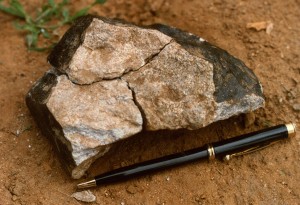 |
| 2. A meteorite, weighing nearly a kilogram, fell at Chomu under Samod police station in the month of June 2000. A team from the planetarium visited and photogrpahed the site. The meteorite was deposited at the Jaipur forensic lab near the police lines. The team took a few photographs of the meteorite. | 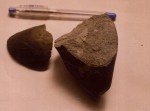 |
| 3. Another meteorite, weighing about a couple of kilograms, fell on June 6, 2017, at Mukundpura village lying on the Jaipur-Ajmer highway at the outskirts of Jaipur. A team from the planetarium visited the site of fall and collected a few samples of the meteorite. The meteorite was pitch black in colour. | 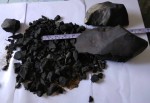 |
Astronomy Olympiad
1. Astronomy Olympiad held on December 17, 2000 organised jointly by NCSM & IAPT. 50 students enrolled themselves for the first round from all over Rajasthan.
2. Astronomy Olympiad held on January 20, 2002 organised jointly by NCSM & IAPT. 182 students participated in the preliminary examination. Junior group - 20; Senior group -122.
3. Astronomy Olympiad held on November 27, 2005 organised jointly by NCSM & IAPT. 25 students participated in the preliminary examination. Junior group - 2; Senior group - 23.
4. Astronomy Olympiad held on November 26, 2006 organised jointly by NCSM & IAPT. 178 students participated in the preliminary examination. Junior group -123; Senior group - 55.
5. Astronomy Olympiad held on November 25, 2007 organised jointly by NCSM & IAPT. 12 students participated in the preliminary examination. Junior group - 6; Senior group - 6.
6. Astronomy Olympiad held on November, 2008 organised jointly by NCSM & IAPT. 34 students participated in the preliminary examination. Junior group - 18; Senior group - 16.
7. Astronomy Olympiad held on November 22, 2009 organised jointly by NCSM & IAPT. 50 students participated in the preliminary examination. Junior group - 14; Senior group - 36.
Telescope Making Workshops
1. Two telescope making workshop sponsored by NCSTC/DST, New Delhi, were conducted at Shillong. Each of these workshops were held for 20 groups of students and teachers from all over the north-eastern states during May 22-June 2, 1995, and June 24 – July 7, 1999. Both the time the workshops were hosted by the North-Eastern Hill University (NEHU), Shillong.
2. A similar “Telescope Making cum Training Workshop” sponsored by NCSTC/DST, New Delhi, on the eve of total solar eclipse on November 5, 1995, was conducted for students, teachers & science communicators of adjoining states Orissa at Pathani Samanta Planetarium, Bhubaneshwar, during July 10- 21, 1995. The Orissa Council/Dept. of Science & Technology and Education collaborated in organising the workshop. A total of twenty Dobsonian telescopes of aperture 6 inches, were manufactured during the workshop.
3. A similar telescope making workshop was conducted at Bhopal during December 21, 1998 - January 2, 1999.
4. Telescope Making Workshop was held in Hyderabad during July 25 - August 7, 1999, sponsored by NCSTC/DST. The B.M.Birla Science Centre, Adarsh Nagar, Hyderabad, hosted the workshop inviting 40 students and twenty accompanying teachers from various southern states.
5. Telescope making workshop in collaboration with DST, Jaipur, during April 18 - 30, 2003, for 20 teacher-student groups from neighbouring schools.
6. Telescope assembly workshop, April 6-9, 2011, sponsored by DST, Jaipur
Astronomy Summer Course
A two weeks long workshop was oranised during June 12-25, 2002, for school students above the age of 15 years.
Astronomy Workshop for Faculty/Research Scholars
An Introductory Workshop on Astronomy was organised during September 2-4, 2013, in collaboration with the Dept. of Physics, Raj. Univ.. The workshop was sponsored by IUCAA, Pune. Participants - 49.
Sponsored Astronomy Workshop for School Students
1. National workshop on astronomy, November 1-4, 2011, sponsored by Vigyan Prasar, New Delhi.
2. National workshop on astronomy, May 22-25, 2012, sponsored by Vigyan Prasar, New Delhi.
3. For the tribal students of the state, November 20-24, 2018, sponsored by Vigyan Prasar, New Delhi.
4. For the tribal students of the state, December 18-20, 2019, sponsored by Vigyan Prasar, New Delhi.
Eclipse Expeditions
An eclipse expedition was carried out during the total solar eclipse on October 24, 1995, at Pragpura near 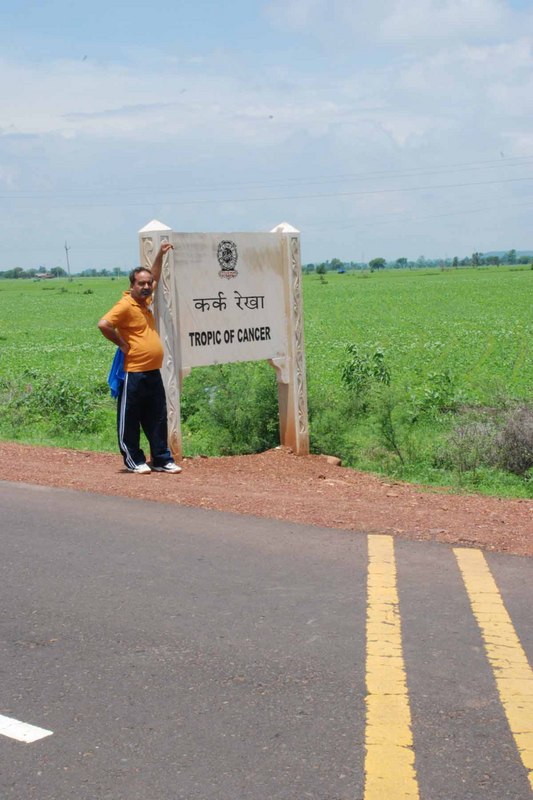 Paota in the Jaipur district. Mrs. G.P. Birla, Dr. B.G.Sidharth & Mr. V.D.Mathur joined the expedition to view and photograph this spectacular event.
Paota in the Jaipur district. Mrs. G.P. Birla, Dr. B.G.Sidharth & Mr. V.D.Mathur joined the expedition to view and photograph this spectacular event.
During a total solar eclipse on August 11, 1999, a two member team consisting of Mr.Indra Khatri and Mr.Gautam Gurtoo, of local amateur astronomers association went to Kachh in Gujrat, chasing the eclipse. Unfortunately, it was monsoon time and the sky remained cloudy throughout the day.
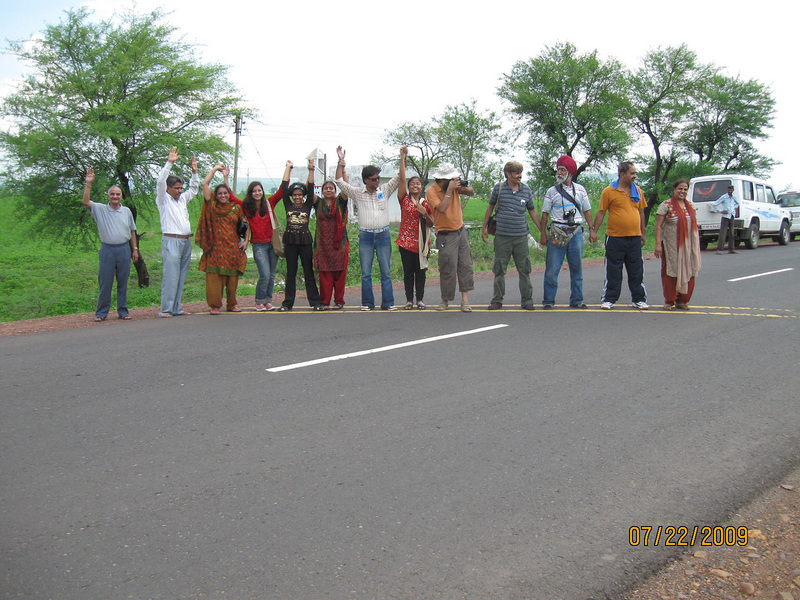
An eclipse expedition was carried out to Bhopal for a total eclipse on July 22, 2009. A 20 member team of amateurs joined us to observe and photograph the eclipse from the historic site of Bhimbetka near Bhopal. The early morning eclipse was totally clouded out with heavy to light rainfall all along starting the preceding day. The members of the team however, enjoyed the momentary darkness of the eclipse, as the sun got blocked out by the moon behind the clouds for a while. The pre-historic cave paintings of Bhimbetka were quite an attraction for the expedition members. Later in the day, the entire team visited the Budhist Stupa at Sanchi little away from Bhopal. The Tropic of Cancer line drawn on the road, on the way to Sanchi, created quite an excitement among the amateurs.
Robotics Workshop
The Planetarium organised a week long workshop during May 13-19, 2013 on ROBOTICS for the students of age-group 9 - 16 years. A total of 15 students participated in this workshop. They assembled and programmed various robots using commercially available kits. The participants exhibited their exploits during the workshop on the last day for the general public.
Equinox/Solstice Activities in collaboration with the Amateur Astronomers' Society, Jaipur
1. One-day workshop at Jantar-Mantar on September 23, 2010.
2 .Winter solstice activity at Jantar-Mantar on December 23, 2013.
3. Winter solstice activity at Jantar-Mantra during 19-20 Dcember, 2015.
4. Equinox activity at Jantar-Mantar during September 23-24, 2017.
5. Equinox activity at Jantar-Mantar on September 23, 2018.
Other Workshops in collaboration with the Amateur Astronomers' Society, Jaipur
1. Telescope making workshop during October 19-20, 1996. In all 22 school students participated to make Galilean Telescopes for themseves using readily available local material.
2. A workshop on astronomy, partly sponsored by the DST Rajasthan, for the the undergraduates of local colleges - December 18-21, 2009.
3. A summer workshop on astronomy, June 4-6, 2013.
4. A workshop on astrochemistry, partly sponsored by the DST Rajasthan - December 22-24, 2011 - attended by 16 participants from local institutions throughout the city.
5. A workshop on sundial making - May 15, 2014 - participated by 21 school students.
6. Workshop on "Fundamentals of Astronomy," January 3-5, 2018. Participants - 84
7. Wokshop on "Fundamentals of Astronomy," January 8-10, 2019. Participants - 165
8. Workshop on "Fundamentals of Astronomy," January 6-8, 2020. 42 participants, mostly from local colleges.
9. Online workshop on "Fundamentals of Astronomy." January 7-13, 2021. Participants - 190.

The members of the Amateur Astronomers' Society literally joinned hands with the planetarium to organise and host the 35th annual meet of the Astronomical Society of India (ASI) during March 6-9, 2017. The meet was attended by around 400 participants from all over the country.
First light ceremony of a motorised telescope
The planetarium has added to its kitty a prized eleven inch Schmidt Cassegrain Celestron telescope. The 'first light ceremony' of the telescope was presided over by Prof. Ranjan Gupta, IUCAA, Pune, on January 25, 2013. The telescope is equipped with various back-end instruments for astro-photography and astro-photometry and is freely is available for use by trained professionals and amateurs with prior intimation. In-house observational research programmes are being carried out using the telescope and various outreach programmes are being organised to train the uninitiated into serious observational programmes.
Collaborative research publications
1. The forgotten stone observatories of Rajasthan, IJHS,
2. Sundial for time-keeping in Jaisalmer fort, IJHS, 52.2 (2017) 138-147
3. Astronomical significance of sundials in Srirangapatana, Kanataka, India, March 10 2019, Current Science, vol.116., No.5
4. Astronomical significance of the sundials in Agra, India, March 10 2021, Vol. 120, No. 5.
Digitisation of dome projection and introduction of online booking system
The opto-mechanical central star projection machine (GOTO, Spacemaster II) of the mid-eighties, with its myriad of ancillary peripheral slide projectors, as well as special effects projectors, constitute the backbone of the planetarium. Technological innovations have brought in a sea change in the projection technology over the years. It was time to introduce a digital projection system to spruce up the planetarium programme presentation, and sustain its aluring appealing to its new generation visitors. Accordingly, a digitised video and audio delivery system was introduced and completely integrated with the old control system, in 2016.
- The original stereo audio delivery system has been augmented upto an 8.1 hi-fidelity system with audio placement capability anywhere on the dome.
- Four high definition LED video projectors are blended together to cover to a little less than half the dome with an uni-directional seating arrangement.
- A three colour programmable cove lighting system, consisting of around 4000 pixels, adds another level of ethereal ambience during the programme presentation.
The entire digitisation process was conceived and executed using in-house expertise at a highly manageable cost.
The planetarium booking sysytem has also been completely digitised in view of the recent Corona pandemic. The system is now entirely cashless with an extremely smooth online booking facility in place. The next logical step will be to introduce an automated ticket vending machine saving on manpower and other allied expenses.
The planetarium, a dream project of Shri. G.P.Birla, commomorating the memory of his illustrious industrialist father, Shri. B.M.Birla, is now not only an architectural landmark of the city, but also serves as a unique facility benefiting scores of people with its various sky shows and other allied activities over the years.
